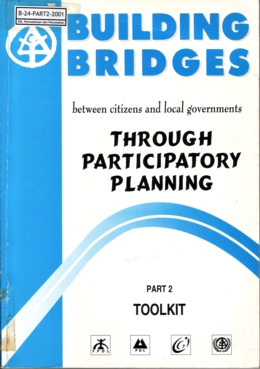|
 This manual (Part 2) is presented in two parts. Component 1 includes a few training design ideas and exercises in case you want to organize and conduct a more traditional learning event. For example, you might want to conduct a short workshop to introduce the concepts and ideas of participatory planning to local government and community leaders. Or brief trainers and facilitators on how to use the materials to design and facilitate a participatory planning process working with a planning team assembled by local leaders. These facilitated work sessions could focus on either the development of a long-range strategic plan for the community or an action plan to address a more immediate problem within the community. Many of the tools in component 2 will also be useful to use in these types of training programs. Post Date : 16 Juni 2010 |